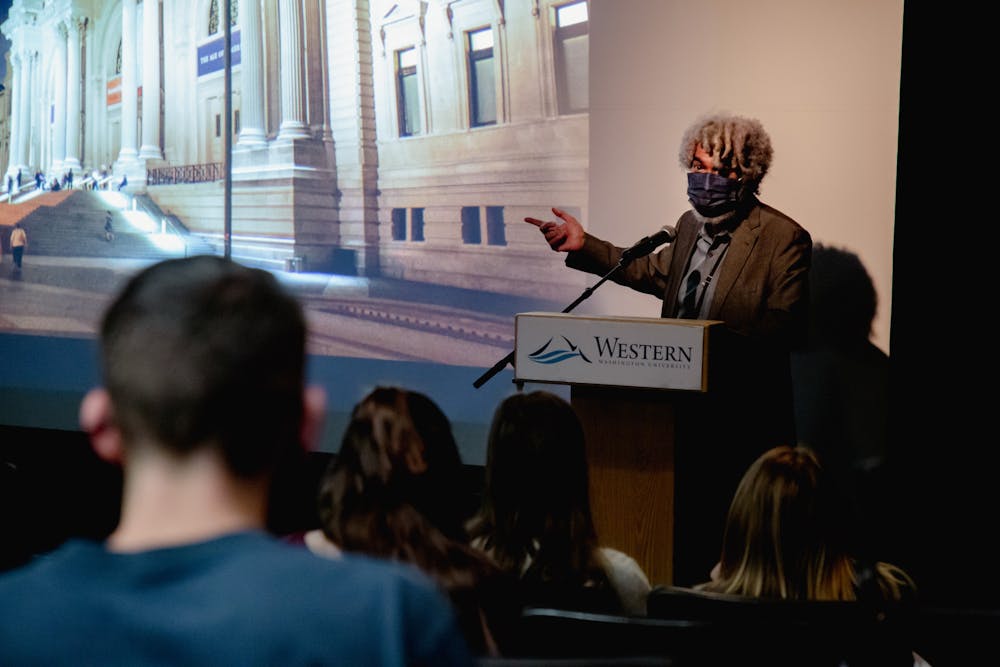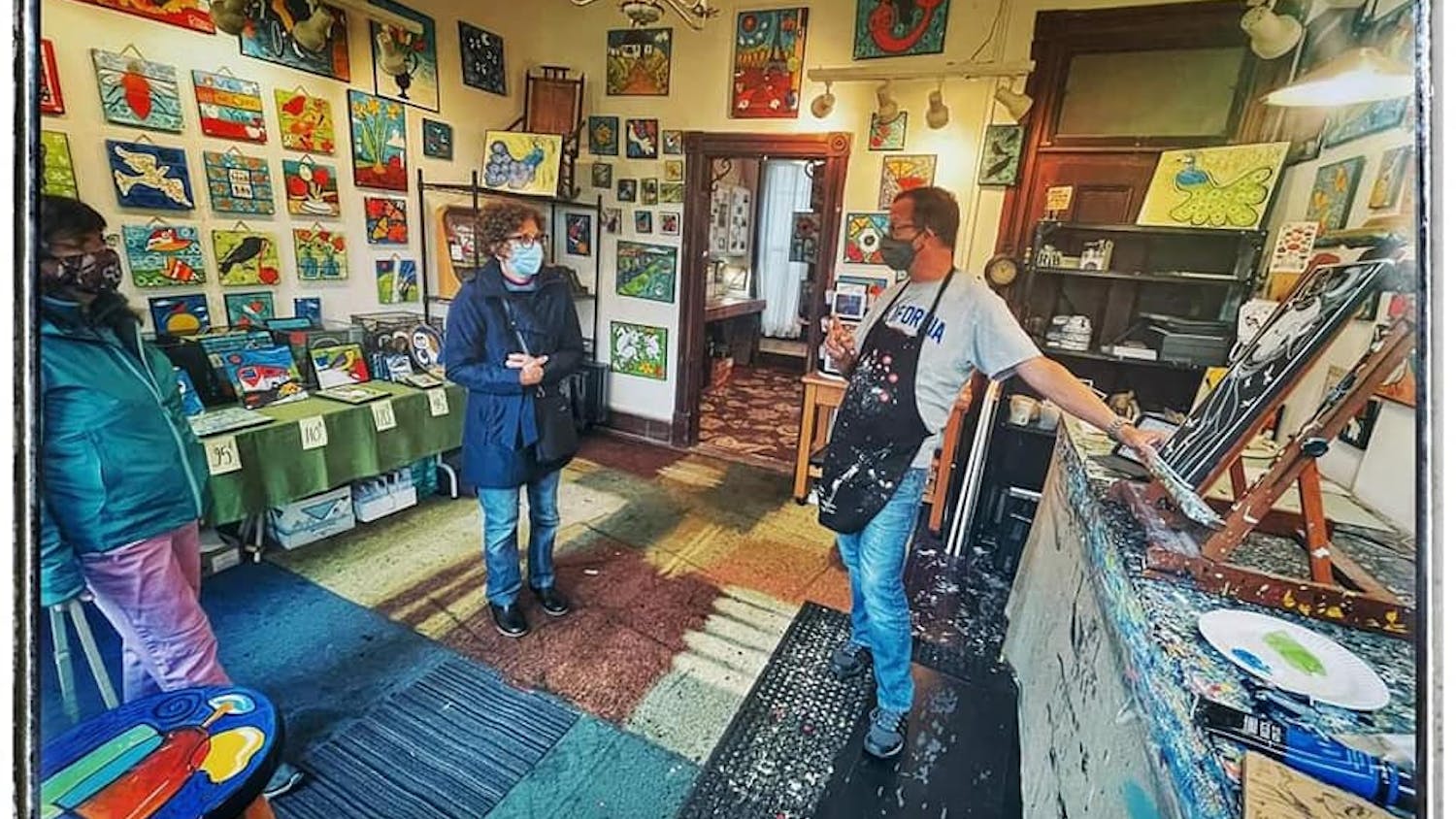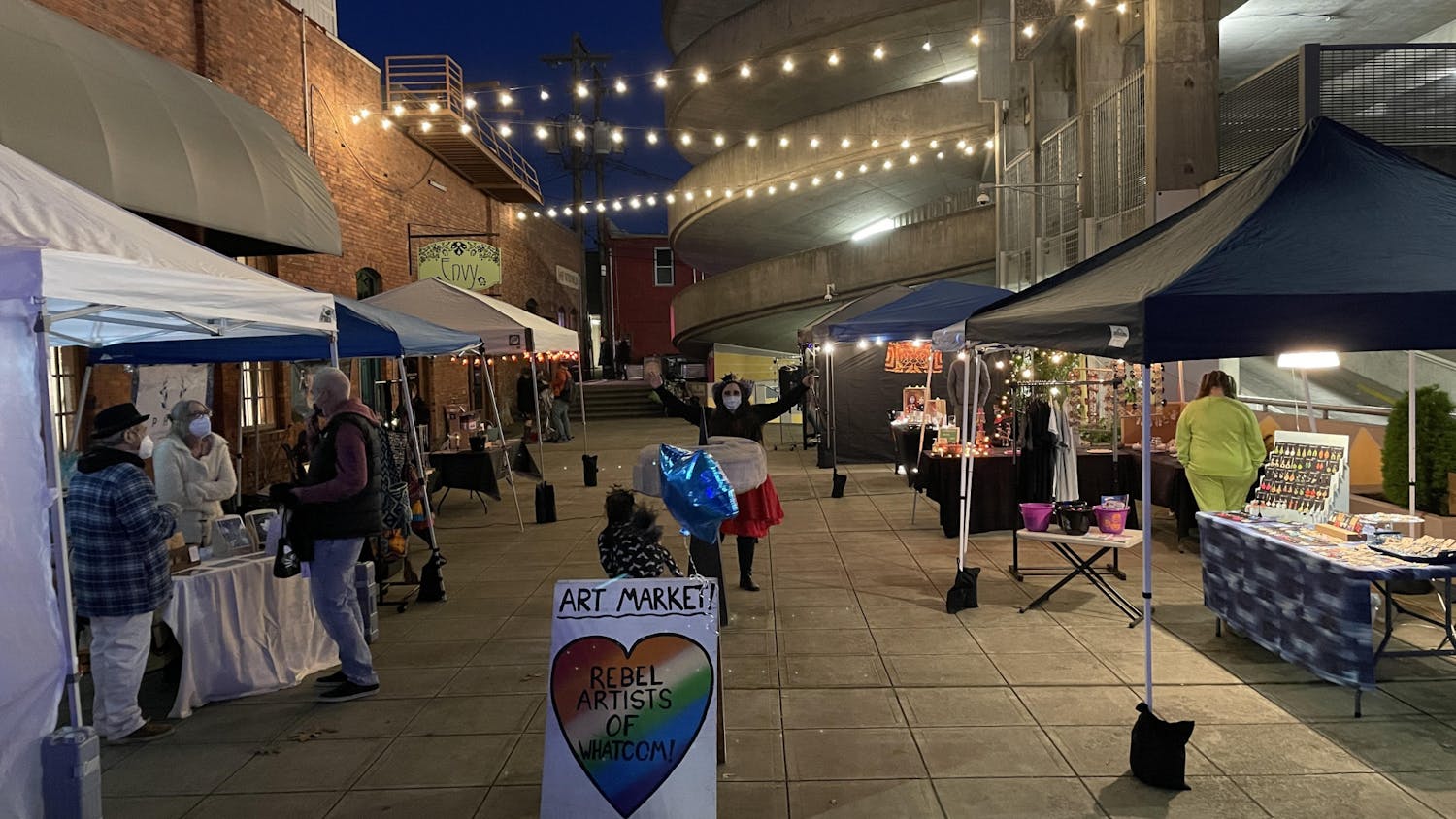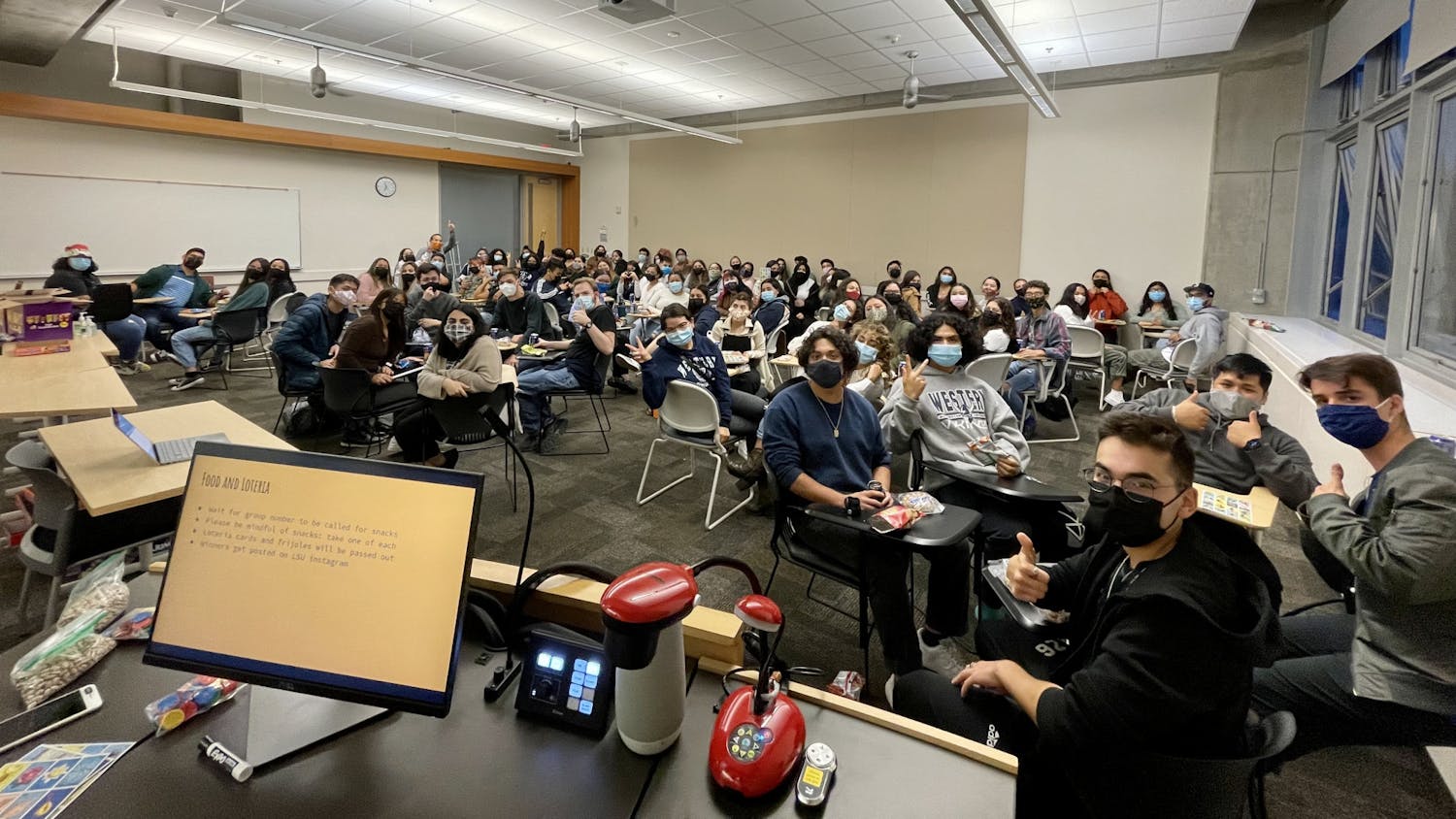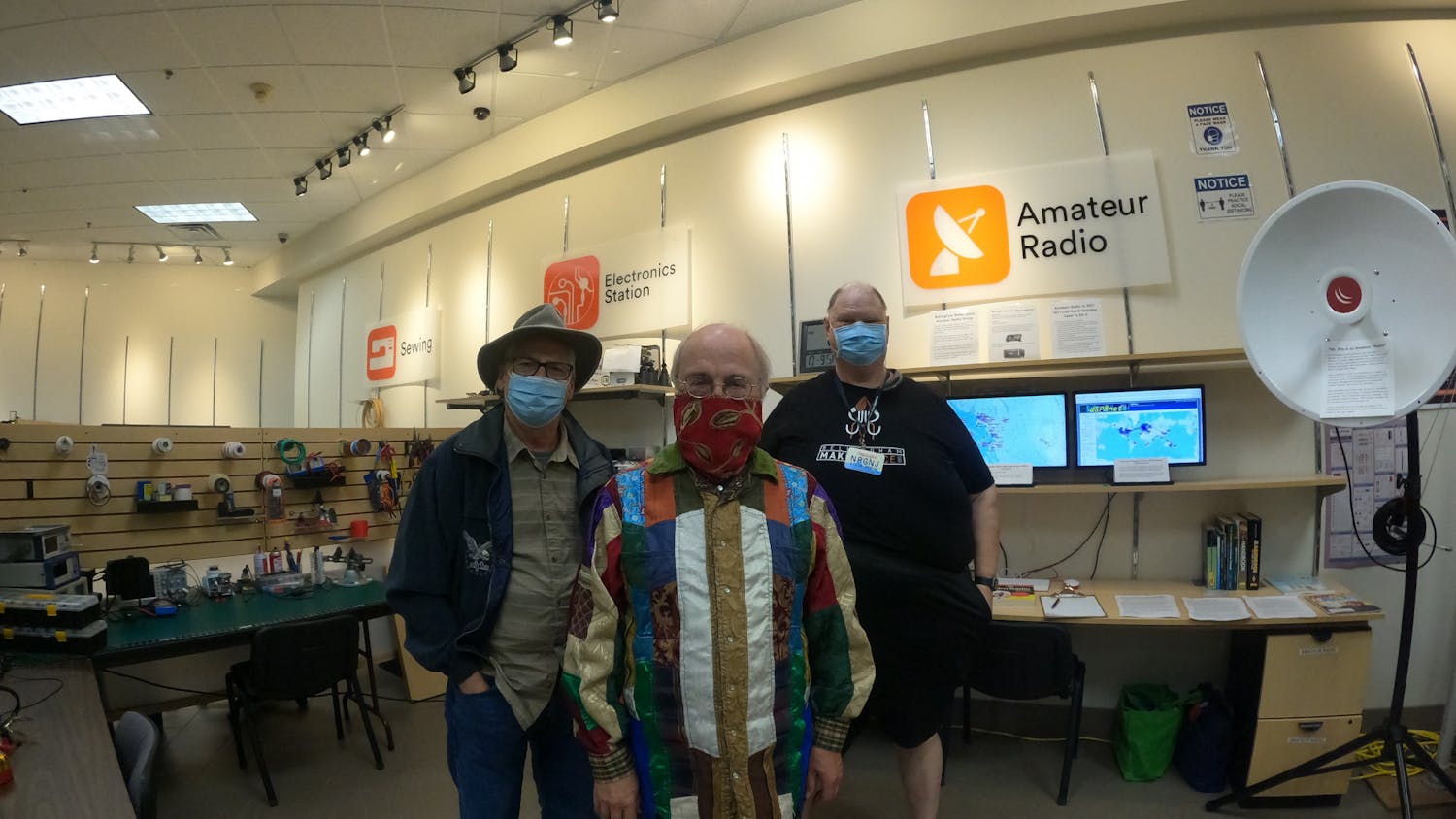This November, Western Washington University welcomed internationally renowned artist Fred Wilson to campus, preceding the installation of two of his glass chandeliers in the Viking Union outside the Multicultural Center.
Wilson gave a talk about his work on Nov. 12 in the Old Main Theatre, and installation of his pieces began on Nov. 15.
“Wilson is already a legendary artist, who is known for developing new ways for art to address difficult social issues,” said Hafþór Yngvason, the director of the Western Gallery. “The glass chandeliers are very strong sculptures that we can enjoy for their beauty, but they also draw you into a complex web of social concerns that we cannot avoid.”
Wilson is a Bronx-based artist who describes himself as being of African, Native American, European and Amerindian descent. His art focuses on challenging colonial assumptions about history, culture and race while encouraging viewers to consider the social narratives represented in Western canon.
His achievements include a MacArthur Foundation Genius Grant in 1999, the Larry Aldrich Foundation Award in 2003 and representing the U.S. at the Biennial Cairo in 1992 and the Venice Biennale in 2003.
“[Wilson] has had to face prejudice and injustice, so he is in a position to address racial issues with deep insight and honesty,” Yngvason said. “I think students will be surprised by the strong physical presence of the sculptures and how different they are from other art on campus. I hope it raises their curiosity and encourages them to think about art and what it means.”
The chandeliers are titled “The Way the Moon is in Love with the Dark” and “A Moth of Peace.” The first was originally exhibited in 2017 for his installation “Afro Kismet,” which showed at the Pera Museum in the Istanbul Biennial. The latter was first exhibited in 2018 at the Pace Gallery.
Chandeliers are often viewed as grandiose symbols of wealth, something that informed Wilson’s creation of these pieces, according to the forward in Wilson’s program for his 2019 exhibit at the Pace Gallery in New York City. Both pieces were made with Venetian glass, specifically in the style of glassmakers on the Murano island in Italy.
“The Way the Moon is in Love with the Dark” is a massive piece of nearly pure black glass, taking heavy swooping curves of Venetian influence combined with the large cylindrical spires of Turkish chandeliers.
The accompanying “A Moth of Peace'' is smaller and constructed of white glass flecked with black, leaning much more heavily into its Venetian influence with its beautifully tiered layers.
“When I got to Murano, it was just a little heaven for me,” Wilson said during his talk. “The glass blowers there, they had these incredibly beautiful designs and styles.”
Venetian glass blowers and other glass craftsmen use light and pastel colors because they reflect light. Black, however, does not, which Wilson said is actually created with an intense red in glass.
“There are so many things that need to come together to bring sculptures of this scale into a public place,” Yngvason said.
Being in Venice, Wilson was inspired to do something with Shakespeare’s Othello. In his first chandelier exhibit, titled “Speak of Me as I Am: Chandelier Mori,” each piece was titled after a line or moment from the show. This was created as an installation for the U.S. pavilion at the 50th Venice Biennale in 2003. The Biennale is a contemporary art exhibit in Turkey that’s held every two years.
“The exhibition was called ‘Speak of Me as I Am’ which is a line from Othello. [Othello is] the most famous African of Venice that never lived,” Wilson said. “They remind me of Othello, who is magnificent, mournful and also monstrous.”
He created the first of the two chandeliers being shown at Western, “The Way the Moon is In Love with the Dark,” during a project for the Istanbul Biennial.
“In all the paintings in Venice there are often images of Turks, images of Africans every once and awhile, but mostly images of Turks,” Wilson said. “And this is because the relationship between the Turks and the Venetians over the centuries was either one of trade or one of war. I viewed it as either a peaceful, or not-so peaceful, encounter between the two.”
This title, unlike most of Wilson’s other chandeliers named after moments from Othello, comes from Russian writer Alexander Pushkin. Pushkin was the descendant of an African slave who served as a general for Alexander the Great.
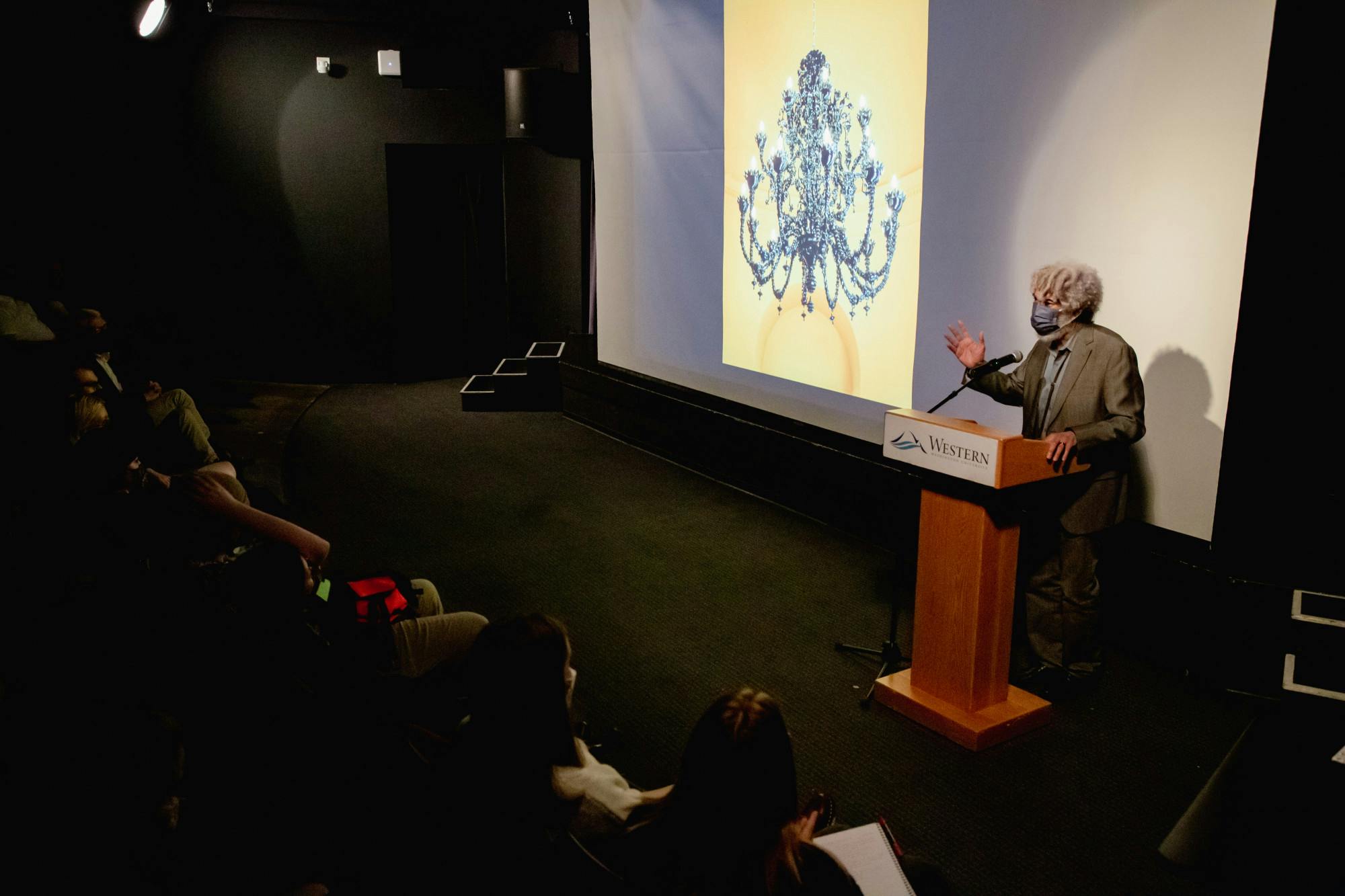
While presenting his chandelier series during his panel, Wilson spoke about his inspiration from the play Othello for many of his chandeliers, and his draw toward black glass. // Photo courtesy of the Associated Students of WWU
Wilson views the chandeliers as metaphors for the African presence in the Renaissance, according to the forward in Wilson’s program for his 2019 exhibit at the Pace Gallery in New York City.
Justin Horne, who has worked with Wilson at the Pace Gallery, flew to Western to assist with the installation process.
“The support and enthusiasm from the university has been incredibly heartening,” Horne said at Wilson’s artist talk. “It’s a special place and a special project.”
As director of the Western Gallery, Yngvason chairs the artist selection process. When an artist has been chosen, he works closely with them to make sure the work will thrive in its new location. When Western has funding for a new installation, they put together an artist selection committee who compiles a group of artists to reach out to.
Yngvason commented that having frank conversations about public art is always important, and the nature of the themes of Wilson’s art will hopefully be a source of debate and conversation. It’s a great expansion on Western’s existing prestigious gallery, Yngvason said.
“Many of our most important sculptures were given to us by a great art collector and philanthropist Jinny Wright,” Yngason said.
Jinny Wright was an influential Pacific Northwest patron of the arts who died in 2020.
“I hope that Western will continue to build on her legacy and bring sculptures to campus that she would be proud of,” Yngason said. “Everything that happens here is about our students.”


